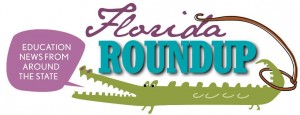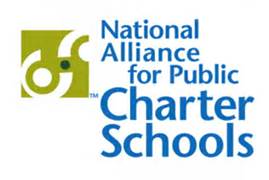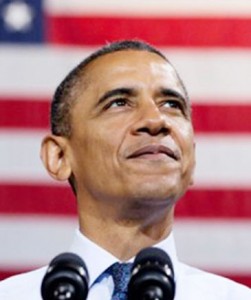 Charter schools. Abrupt failures of two charter schools take students and teachers by surprise. Orlando Sentinel. Florida Times-Union. WESH. Central Florida News 13.
Charter schools. Abrupt failures of two charter schools take students and teachers by surprise. Orlando Sentinel. Florida Times-Union. WESH. Central Florida News 13.
Testing. Hillsborough schools officials explain why they aren't as quick to cut back on testing as some other districts. Gradebook. What happens when there's a testing mishap? Leesburg Daily Commercial.
Achievement. An Immokalee student heads to Columbia, getting a write-up in People magazine. Hernando schools celebrate turnaround students. Tampa Bay Times.
Teacher appreciation. Palm Beach schools recognize top teachers. Sun-Sentinel. A Seminole teacher is a finalist for a state award. Orlando Sentinel.
Race to the Top. Florida school districts spend the last of their Race to the Top funds. Gradebook.
Funding. Hernando sets the date for a school district sales tax referendum. Tampa Bay Times.
Labor. Teacher contract negotiations break down in Santa Rosa. Pensacola News-Journal.
Florida's two largest school districts could soon be searching for charter schools looking to serve their most disadvantaged neighborhoods.
The state Department of Education has chosen three school districts, including Broward and Miami-Dade Counties, to receive grants intended to entice more national charter school networks to open in Florida's academically struggling urban areas and stoke new collaborations between districts and charters.
Duval County, the third district chosen from four that applied, already has a high-profile charter school collaborator in KIPP Jacksonville.
The two South Florida districts indicated in their grant applications that they intend to recruit similar "high-impact" charter schools from around the country. They described plans to seek proposals from charter networks looking to open schools in high-needs areas and work with the districts on improving results for children in poverty.
First, their school boards need to sign off. John Schuster, a spokesman for the Miami-Dade County school district, said in an email that a school board committee would likely vet the charter school collaboration grant this week, which would allow the full board to decide how to proceed at its Feb. 11 meeting.
A spokeswoman for the state education department said it has so far committed about $665,000 in grant funding to each district — a three-way split of $2 million in Race to the Top funding, which is expected to start flowing to districts once their final plans are approved.
In the past three years, 18 states have lifted caps on the number of charters schools allowed, another sign that lawmakers are embracing charters as valuable options in public education.
 “I think there’s a growing recognition from state policymakers that charter schools are one of the pieces of the puzzle of education reform,’’ said Todd Ziebarth of the National Alliance for Public Charter Schools. “They’re not the silver bullet. They’re not a panacea.’’
“I think there’s a growing recognition from state policymakers that charter schools are one of the pieces of the puzzle of education reform,’’ said Todd Ziebarth of the National Alliance for Public Charter Schools. “They’re not the silver bullet. They’re not a panacea.’’
But when charter schools are allowed to push the traditional system, they can become the labs of innovation they were designed to be, he said.
The information on caps comes in a new report from the alliance, which also looked at other changes states have made to charter school laws. Forty-two states and the District of Columbia now have charter schools, and the alliance concluded 35 of them strengthened their laws. In the alliance’s view, that could mean anything from increasing transparency of the approval process to ensuring local charter school authorizers are adequately funded.
Most of the progress was on lifting the caps, said Ziebarth, who co-authored the report and is the alliance’s senior vice president for state advocacy and support. Between 2010 and the beginning of 2013, 16 states lifted caps. Since January, Mississippi and Texas have joined the list.
Mississippi went from allowing 12 chronically low-performing traditional schools to convert into charters to an independent authorizer that can approve opening up to 15 startup charters per year. In Texas, which capped charters statewide at 215, new legislation fell short of removing the cap completely but allows for gradual growth to 305 charters by 2019.
Other states that made big changes to caps include Missouri, which once limited charters to St. Louis and Kansas City but now allows them statewide, and North Carolina, which nixed a 100-school limit in 2011.
Federal Race To The Top grants spurred many states to lift or do away with the caps in 2009 because the move was required to compete, Ziebarth said, but that effort had run its course by 2010.
The alliance counts more than 520,000 students on charter school waiting lists nationwide. But Ziebarth said caps aren’t the biggest hurdles to meeting demand. There’s also lack of equitable funding and facilities, and the fact that just about every state allows school districts to authorize charter schools – which can bog down the process of approvals.
“It’s kind of a shot-gun wedding,’’ Ziebarth said.
Those are issues state leaders must address, said alliance President Nina Rees.
“Despite strong, bipartisan progress by many visionary state legislators, most states still have yet to catch up to parental demand,’’ she said in a prepared statement. “And, we have a long way to go to ensure that students in public charter schools receive the same funding as their peers in traditional public schools.’’
Editor's note: This is the first of four guest posts on the future of teachers unions.
At the heart of any discussion of the unions’ role in American education, whether that role is now or in the future, lies a fundamental dilemma. On the one hand, it is clear that teachers are the key determinants of student achievement, that they are the experts on teaching, and that, if human capital is to be organized in the best possible ways for educating children, teachers need to have systematic input when decisions are made. They also need to be involved in the implementation process as decisions get translated into action. The teacher unions - which represent teachers and provide the key means of coordinating their behavior toward agreed-upon ends - would therefore seem to have very positive roles to play in both the making and implementation of education policy.
There is, however, an on the other hand. And herein lies the dilemma. Teachers join unions to protect and promote their occupational interests as employees: in job security, in better wages and benefits, in restrictive work rules. These job interests - which are the core interests that motivate union behavior - are simply not the same as the interests of children or the requirements of effective organization. Throughout the modern era, as a result, the teacher unions have often used their political power to block or weaken major reform efforts - efforts that would expand school choice, evaluate teachers based on performance, pay teachers with some reference to performance, move bad teachers out of the classroom, and more - because these reforms are threatening to the jobs of their members. Similarly, the unions have used their power in collective bargaining to impose work rules - seniority based layoffs and transfers, restrictions on teachers assignments, onerous evaluation and dismissal procedures, and the like - that are not designed to promote effective organization, and indeed are perverse and counterproductive.
So the dilemma, to state it simply, is that teachers are enormously important to the effective organization of schooling, and their involvement in decision making and reform makes eminently good sense - yet when teachers are organized into unions, the teacher unions use their power to promote the job interests of their members rather than the best interests of children, and this often leads them to undermine effective organization and stand in the way of reform.
That there is a dilemma here is not a secret. Indeed, over the last decade or so, this problem has increasingly become a topic of concern within the reform community, particularly among the growing numbers of liberals, moderates, and Democrats who - while supportive of teacher unions and collective bargaining in general - are now critical of the teachers unions for being obstacles to reform and effective schools.
The widespread view among this crucial group of reformers, however, is that there is a solution to the problem. The solution is reform unionism: which rests on the belief that, with enlightened union leadership (think Randi Weingarten) and sufficient pressure from the outside (think Race to the Top’s “union buy-in” requirement), the unions can be expected to change their behavior - to stop blocking reform, to stop imposing restrictive work rules, and to actively embrace whatever approaches to schooling are best for kids. In a world of reform unionism, then, union power is not a problem and indeed can be welcomed and embraced - because the unions will use their power in the best interests of children and quality education.
This belief is a way of squaring the circle for those who see unions and collective bargaining as essentials of the good society. But in the hard light of reality it is fanciful and misguided, and it prompts reformers to look for solutions where they don't exist. (more…)
Charter schools. The Tampa Tribune writes up the latest report on charter laws from the National Association of Public Charter Schools and quotes Robert Haag, president and CEO of the Florida Consortium of Public Charter Schools: "You want choices for your child's education, just like anything else in life. You don't want to be stuck just going to Publix. You want to be able to go to Winn-Dixie or Whole Foods or any of those places."
The Pembroke Pines charter school system is battling the Broward school district for funding, reports the South Florida Sun Sentinel. An F-rated charter middle school in Orlando plans to ask the Orange County school district for designation as an alternative school, which wouldn't be graded, reports SchoolZone. The Orlando Sentinel editorial board doesn't like the idea of more construction money for charter schools - or the possibility of a parent trigger.
School spending. The Manatee school district's Fitch bond rating is downgraded from stable to negative, reports the Bradenton Herald. The district posts thousands of documents from the forensic audit into a $3.4 million deficit, the Herald also reports. The documents show a school board member forced former superintendent Tim McGonegal to resign after he learned of the deficit, reports the Sarasota Herald Tribune.
Following Florida: Nevada should adopt Florida's ed reforms, particularly its expansion of school choice options, says this op-ed in Nevada Business Magazine.
Rick Scott. As the governor woos teachers, the Tea Party scratches its head. Tampa Bay Times.
Exposed, again! Another news outlet gives space to the Jeb Bush corporate-connections-conspiracy story.
Teacher evaluations. The Tampa Bay Times offers an update on the Gates-funded effort in Hillsborough. A Flagler teacher will focus on teacher evaluations as a fellow with the Hope Street Group, a national public policy outfit, reports the Daytona Beach News Journal. (more…)
Common Core: There is general acceptance among teachers, teachers unions and politicians in Florida that Common Core is a good thing, but questions remain about testing and funding, the Associated Press reports.
Next big step. President Obama can build on Common Core by creating another Race to the Top competition, inviting teachers to create top-notch, MOOC-like courses that can be viewed by students anywhere, write David Colburn and Brian Dassler in this op-ed for the Tampa Bay Times.
 Ed reform Christmas Carol. Have we forgotten the Ghost of Education Past? From EdFly Blog: “For some, this brings nostalgia for the days when teachers and schools set their own standards. Forgotten is that while this system worked well for the children of affluent parents who lived near the best schools, it failed a growing number of kids not born into such fortunate circumstances.”
Ed reform Christmas Carol. Have we forgotten the Ghost of Education Past? From EdFly Blog: “For some, this brings nostalgia for the days when teachers and schools set their own standards. Forgotten is that while this system worked well for the children of affluent parents who lived near the best schools, it failed a growing number of kids not born into such fortunate circumstances.”
Private school security. The Palm Beach Post looks at the response from private schools in the wake of Newtown. The Post also looked at how charter schools in Palm Beach County responded.
Rookies. A year in the life of a first-year teacher. Second in a series. Fort Myers News Press.
Transfers. A Collier County teacher fights an involuntary transfer. Naples Daily News.
More school grades. The grading formula is in flux. School Zone.
Is the FCAT required or not? StateImpact Florida.
 On top of the world. Gov. Rick Scott calls the PIRLS results (an international assessment that shows Florida fourth-graders are second only to their peers in Hong Kong in reading) “great news for Florida as our state becomes a hub for global commerce.” Jeb Bush says Florida students are “again busting all the myths.” No more Flori-duh, writes EdFly Blog: “Florida has gone from one of the worst reading states in the nation to one of the top reading nations in the world. And just last month I read a story about Jeb Bush’s education reforms in Reuters, which concluded: 'But a close examination raises questions about the depth and durability of the (education) gains in Florida.' Think we’ll see a follow-up?” More from Florida Today, Associated Press, Bloomberg, Eduwonk, Jay P. Greene’s Blog. (Image from questprblog.com)
On top of the world. Gov. Rick Scott calls the PIRLS results (an international assessment that shows Florida fourth-graders are second only to their peers in Hong Kong in reading) “great news for Florida as our state becomes a hub for global commerce.” Jeb Bush says Florida students are “again busting all the myths.” No more Flori-duh, writes EdFly Blog: “Florida has gone from one of the worst reading states in the nation to one of the top reading nations in the world. And just last month I read a story about Jeb Bush’s education reforms in Reuters, which concluded: 'But a close examination raises questions about the depth and durability of the (education) gains in Florida.' Think we’ll see a follow-up?” More from Florida Today, Associated Press, Bloomberg, Eduwonk, Jay P. Greene’s Blog. (Image from questprblog.com)
FCAT for voucher kids? Gov. Scott seems to suggest that in comments to reporters Tuesday. Here’s the clip (starts at about the 13-minute mark). Coverage from Gradebook, WTSP, Orlando Sentinel, Associated Press, News Service of Florida. The governor will be speaking in Tampa tonight, at the annual donor dinner for Florida’s tax credit scholarship program (which is sponsored by Step Up For Students, which co-hosts this blog).
Race to the Top. Miami-Dade wins this round, reports the Miami Herald.
Conversion. The Broward County school board considers creating a countywide K-12 digital arts magnet in an effort to help a low-performing middle school meet accountability standards, reports the Sun-Sentinel.
Protection. From the Orlando Sentinel: "After listening to nearly six hours of testimony on both sides of the issue, the Orange County School Board added protections for gay, lesbian and transgender students and staff to the district's nondiscrimination policy early Wednesday."
Wait a minute. The Polk County school board and new superintendent John Stewart may delay the opening of six district-run charter schools for at-risk students, reports the Ledger.
School-to-prison pipeline. On the NAACP's agenda in Duval. Florida Times Union.
Jeb summit coverage. Education Week: Jeb Bush urges reformers to stay the course. More from ABC News/Univision, Washington Times, National Journal, Herald-Tribune. Bush’s remarks on C-SPAN here. For the most complete summit coverage, check back at redefinED and/or follow us @redefinedonline.
Teacher evaluations. Under the new system, the vast majority of teachers in the Duval and St. Johns school districts are rated effective or highly effective (just like under the old system), reports the Florida Times-Union.
Florida Race to the Top finalists. Five districts in the mix, reports Gradebook.
More on Florida grad rates. StateImpact Florida. Orlando Sentinel School Zone blog.
The two-day Florida Charter School Conference officially opens Thursday with keynote speaker Deborah Kenny, founder and chief executive officer of the successful New York charter schools, Harlem Village Academies.
But a pre-conference schedule the day before offers sessions on starting a charter school and networking for principals, along with a three-hour town hall meeting featuring school leaders and legislators scheduled to talk about the future of charters in Florida.
No confirmations, yet, on the roster for that meeting. But look for discussions about charter school funding, especially calls for more oversight in light of the recent discovery of an Orlando charter school that paid its principal $800,000 last school year before the school shut down.
There might also be discussions on PECO funds – Public Education Capital Outlay dollars dedicated to school construction costs. Last year, lawmakers designated $55 million for charter schools and none for traditional public schools.
The rationale? Traditional schools can levy property taxes to build and maintain schools; charters don’t have that luxury. With 574 charter schools in 44 districts and more anticipated, expect debate about the public dollars in 2013.
Although the conference features a separate breakout session Friday on the Charter School Growth Fund, lawmakers might offer some details during the town hall meeting on how that money is used. The fund is made up of $20 million in Race To The Top dollars and $10 million in private donations. (more…)
 President Obama has often called on us to be true to who we are as a people, as Americans. And in his second term, he has the opportunity to transform the education system back to our core - to where parents are primarily in charge of children’s educations.
President Obama has often called on us to be true to who we are as a people, as Americans. And in his second term, he has the opportunity to transform the education system back to our core - to where parents are primarily in charge of children’s educations.
We have paid a price for transferring authority and responsibility for educating children from parents to government entities. With mostly though not always good motives (remember Brown v. Board of Education), we allowed the dream of the government-owned and operated common school to live on despite overwhelming evidence that, in reality, it wasn’t working. A child’s educational destiny continues mostly to be a function of his/her zip code and the competence of strangers who sit on local school boards.
For more than three decades, a long, slow correction of this anomaly in American society has been underway. First, intradistrict and interdistrict transfers began to appear that allowed limited parental choice within some parts of the public school system. Then magnet schools surfaced, offering options such as vocational, talented and gifted, and language immersion programs, and responding to more demands. In 1992, charter schools emerged. Today they account for almost 6 percent of all public schools, approaching 6000 total, and the number grows steadily each year because the demand from parents so far is insatiable.
Thanks to my colleague at the American Center for School Choice, Gloria Romero, a new tool has appeared. The parent trigger empowers parents to make changes to their school when they are not satisfied. Already 20 states have considered the approach and seven have adopted laws.
Private school choice programs continue to gain support, too. And they have done so despite fierce opposition from forces that want to defend market share over a parent’s right to choose. Today, 32 such programs operate in the country. And in recent years, many school choice bills have either been passed by legislatures with Democratic majorities or signed by Democratic governors. Just as important, once enacted, these programs have only grown. No state has repealed a program or decided choice does not serve the public well. Moreover, the doomsday scenarios that opponents consistently forecast for public education systems have never happened.
It’s said you can’t argue with a river; it is going to flow. Parents are going to take back the authority and responsibility for educating their children. The river has been flowing for more than 20 years and the current is gaining speed. It’s time for more Democrats to stop arguing as families assert their fundamental and universally accepted American value that they know the best choice for their children. Democrats need to work in positive ways to transform our system. We need good schools and there’s plenty of room for all types - public, charter, and private.
President Obama has the life experience, as well as the political skills and credentials, to lead this transformation, and to make it less jarring and less confrontational. (more…)